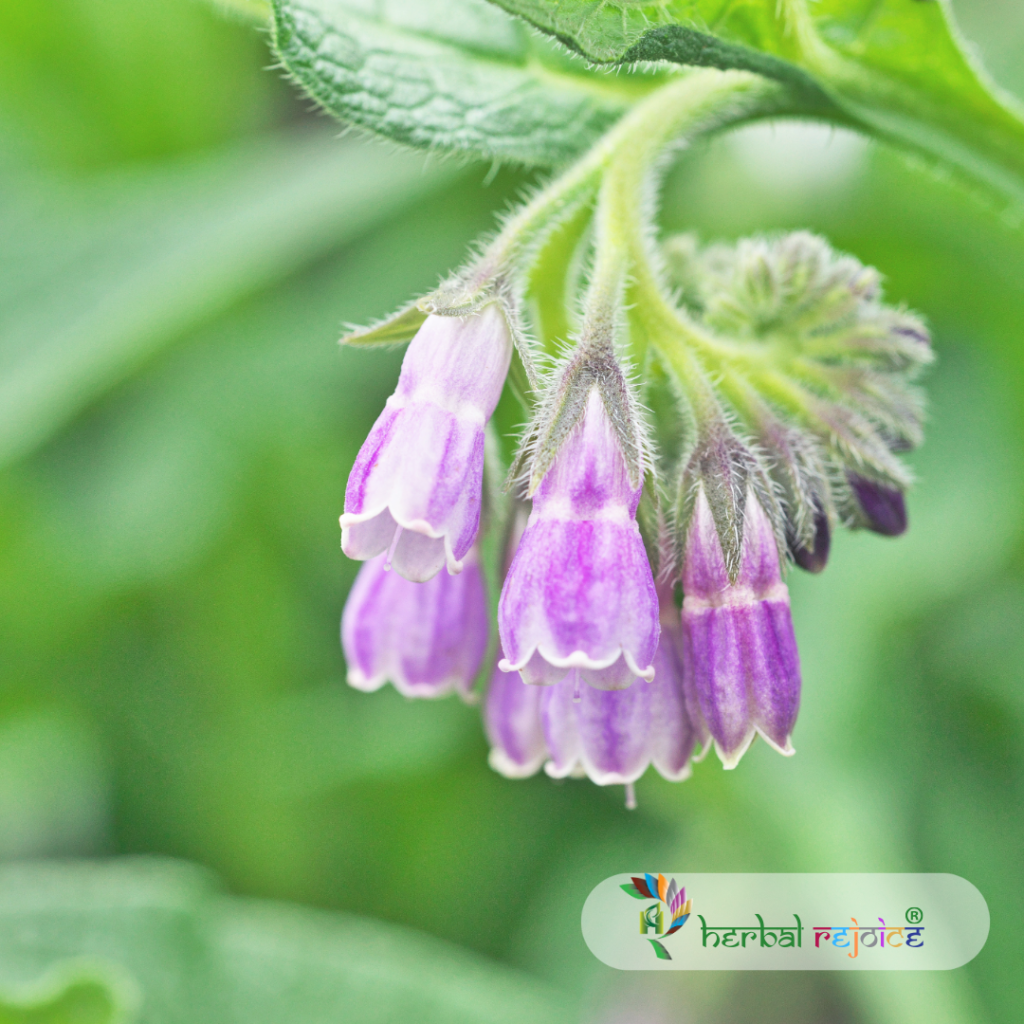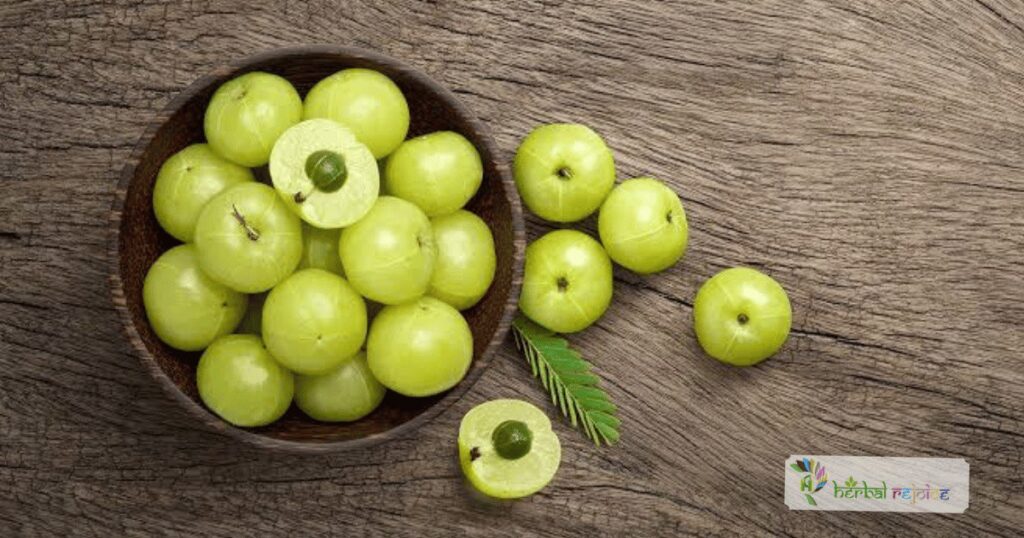Introduction
Comfrey (Symphytum officinale Linn.) is a plant belonging to the Boraginaceae family. It is native to Europe and can be found from the Mediterranean to the Caucasian region. It has also been introduced in Simla, where it is known as Russian Comfrey or Blue Comfrey. Another variety, Prickly Camfrey, is cultivated in Western India. In Maharashtra, it is referred to as Sankuutan in the local language.
Medicinal Properties
Comfrey has several medicinal properties and has been used traditionally as a vulnerary, astringent, demulcent, and haemostatic herb. It is known to repair broken bones and lacerated flesh by promoting the formation of a callus. According to the British Herbal Pharmacopoeia, it is used externally for fractures and sprains to promote bone growth and the formation of callus. The German Commission E also recognizes its key application for these purposes.

One of the active components in Comfrey is allantoin, a cell proliferant that helps repair damaged tissues. It is also attributed to the herb’s anti-inflammatory action, which is due to rosmarinic acid and other phenolic acids present in it. Comfrey has been used for various ailments such as stomach ulcers, irritable bowel syndrome, colitis, and hiatus hernia. However, it is contraindicated in oedematous conditions of the lung. It is also used for the treatment of fractures, sickets, and varicose ulcers.
There has been some controversy surrounding Comfrey due to the presence of pyrrolizidine alkaloids, which are toxic to the liver. Experiments conducted during the 1960s raised concerns about the hepatotoxicity of these alkaloids. However, the dispute is still unresolved, and it is not clear if these alkaloids are hepatotoxic in the context of the whole plant. The aerial parts of the plant are considered safe for use.
Russian Comfrey or Blue Comfrey, which is equated with Symphytum peregrinum Ledeb., is an introduced variety of Comfrey found in Simla, India. This particular variety is known for its high content of allantoin, which is used in the treatment of gastric ulcers, liver disorders, and cancer. Tincture of the fresh herb is also reported to be used for asthma, bronchitis, and congestive conditions of the lungs.
Conclusion
In conclusion, Comfrey, or Symphytum officinale Linn., is a versatile herb with various medicinal properties. It is primarily used externally for fractures and sprains to promote bone growth and the formation of callus. It also has anti-inflammatory and tissue-restorative properties. However, caution should be exercised due to the potential hepatotoxicity of pyrrolizidine alkaloids. Russian Comfrey or Blue Comfrey, a variety of Comfrey, is particularly valued for its high allantoin content.
Frequently Asked Questions
What is Comfrey?
Comfrey is a plant belonging to the Boraginaceae family, native to Europe and found in regions from the Mediterranean to the Caucasian region.
What are the traditional uses of Comfrey?
Comfrey has been traditionally used as a vulnerary, astringent, demulcent, and haemostatic herb.
What are the medicinal properties of Comfrey?
Comfrey has been known to repair broken bones and lacerated flesh by promoting the formation of a callus. It also has anti-inflammatory properties.
What is allantoin?
Allantoin is an active component in Comfrey that helps repair damaged tissues.
What is the anti-inflammatory action of Comfrey attributed to?
The anti-inflammatory action of Comfrey is attributed to rosmarinic acid and other phenolic acids present in it.
What ailments can Comfrey be used for?
Comfrey has been used for ailments such as stomach ulcers, irritable bowel syndrome, colitis, and hiatus hernia. It is also used for fractures, sickets, and varicose ulcers.
Is Comfrey safe for use?
The aerial parts of the Comfrey plant are considered safe for use.
What controversy surrounds Comfrey?
There is controversy surrounding Comfrey due to the presence of pyrrolizidine alkaloids, which are toxic to the liver.
Are pyrrolizidine alkaloids in Comfrey hepatotoxic?
The hepatotoxicity of pyrrolizidine alkaloids in Comfrey is still unresolved and not clear if these alkaloids are hepatotoxic in the context of the whole plant.
Can Comfrey be used for fractures and sprains?
Comfrey is used externally for fractures and sprains to promote bone growth and the formation of callus.
What is Russian Comfrey or Blue Comfrey?
Russian Comfrey or Blue Comfrey is an introduced variety of Comfrey found in Simla, India. It is known for its high content of allantoin.
What is the traditional use of Russian Comfrey or Blue Comfrey?
Russian Comfrey or Blue Comfrey is traditionally used in the treatment of gastric ulcers, liver disorders, and cancer.
What can the tincture of Russian Comfrey be used for?
The tincture of Russian Comfrey is reported to be used for asthma, bronchitis, and congestive conditions of the lungs.
Can Comfrey be used for stomach ulcers?
Comfrey has been used for stomach ulcers traditionally, but caution should be exercised due to the potential hepatotoxicity of pyrrolizidine alkaloids.
What are the names of Comfrey in Simla?
Comfrey in Simla is known as Russian Comfrey or Blue Comfrey.
What is the local name for Comfrey in Maharashtra?
In Maharashtra, Comfrey is referred to as Sankuutan in the local language.
Is Comfrey used for the treatment of varicose ulcers?
Yes, Comfrey is used for the treatment of varicose ulcers.
Is Comfrey contraindicated in any conditions?
Comfrey is contraindicated in oedematous conditions of the lung.
What are the active components in Comfrey?
The active components in Comfrey include allantoin, rosmarinic acid, and other phenolic acids.
What is the value of Russian Comfrey or Blue Comfrey?
Russian Comfrey or Blue Comfrey is valued for its high allantoin content.


